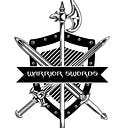The Kukri: More Than Just a Gurkha Knife
This article dives into the fascinating world of the kukri, a curved knife with a rich history and cultural significance that extends far beyond its association with Gurkha soldiers.
The Origins of the Famous Gurkha Knife
There are several theories surrounding the origin of the kukri. Some believe it evolved from Alexander the Great’s cavalry sword, while others link it to a Nepali knife used by the Mallas. The most likely explanation suggests it originated from Nepal itself, with the country’s hilly terrain shaping its unique size and design.
“The kukri: where history meets heritage, shaping the courage of Gurkha warriors through generations.”
History of the Kukri
The kukri’s history stretches back centuries, possibly influenced by both Greek and Nepalese blades. Over time, the kukri transformed into a shorter, wider form with a distinctive curved blade, likely due to the need for practicality in Nepal’s rugged mountains. As the Gurkhas rose to fame, the kukri became synonymous with their bravery in combat.
Design and Construction
The kukri’s defining feature is its curved blade, which facilitates powerful chopping and slicing motions. This curve also contributes to balanced weight distribution, making it effective in both fighting and everyday tasks.
Different Types of Kukris
- Traditional Kukri: Primarily used by villagers and farmers for various tasks such as chopping wood, hunting, and general utility.
- Service Kukri: Designed specifically for Gurkhas and military personnel, prioritizing combat effectiveness and durability.
Crafting a Kukri
The kukri-making process is meticulous, involving heating and shaping the blade, attaching the handle, and intricate finishing touches like polishing and engraving. Traditional methods, passed down through generations, ensure the authenticity and quality of each kukri.
Beyond the Battlefield
While renowned for its combat prowess, the kukri serves a multitude of purposes in everyday life. In Nepal, it’s a cultural icon symbolizing strength and bravery, and some believe it wards off evil spirits. From clearing brush and chopping wood to hunting and food preparation, the kukri is an essential tool deeply woven into Nepalese homes and heritage.
Conclusion
Contrary to the initial misconception, the kukri is anything but a “small” or “oval” knife. It’s a versatile tool steeped in history and cultural significance. The kukri’s enduring legacy lies in its seamless transition between a formidable weapon and a practical tool. This adaptability, coupled with its symbolic value as a representation of Gurkha courage and Nepalese heritage, guarantees the kukri’s continued relevance in the 21st century. Even beyond Gurkha regiments, the kukri serves as a testament to the ingenuity and resourcefulness embedded in its design.
“The kukri: a legacy of strength, a symbol of heritage, and a beacon of Gurkha valor for generations to come.”
